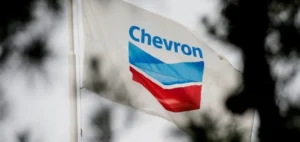Saudi oil giant Aramco reported second-quarter net profit of $30.08 billion on Monday, down sharply on the same period in 2022, due to a decline in oil prices in recent months.
Aramco Adapts Strategy to Market Challenges: 38% Drop in Profits
This 38% year-on-year fall follows a 19.25% drop in the first quarter. “The decrease mainly reflects the impact of lower crude oil prices and weaker refining and chemical margins,” added Aramco, 90% owned by the Saudi state, in a statement.
“Our good results reflect our resilience and ability to adapt to market cycles,” said Aramco CEO Amin Nasser, however.
“With the expected recovery of the global economy and increased activity in the aviation sector, continued investment in energy projects will be necessary to safeguard energy security,” he added.
“For our shareholders, we intend to start distributing our first performance-linked dividend in the third quarter,” he further said.
Aramco, like other industry behemoths, posted record profits last year thanks to soaring black gold prices linked to Russia’s invasion of Ukraine in February 2022, but also to the post-Covid economic recovery. In recent months, oil prices have been weighed down by the risk of global recession, which is weighing on demand prospects. However, crude oil prices have risen slightly in recent days due to the slowdown in inflation in the United States, as well as the production cutback strategy implemented by exporting countries, led by Saudi Arabia.
Price Defense Strategy: Saudi Arabia Reduces Production to Preserve Economy
The world’s largest exporter of crude oil, the kingdom announced in April a 500,000-barrel-per-day (bpd) production cut, as part of a coordinated effort with other oil powers to boost prices. Analysts estimate that Saudi Arabia needs an oil price of around $80 a barrel to balance its budget. It was only in July that the averages exceeded this threshold, a sign that recent supply cuts are beginning to have the desired effect.
These declines “show how far the kingdom will go to defend oil prices, as the collapse in the market for its commodity is undermining its ambitious economic diversification efforts”, said Herman Wang, analyst at S&P Global Commodity Insights.
Aramco is investing to increase its production capacity to 13 million bpd by 2027. Aramco’s profits are the main source of revenue for Crown Prince Mohammed bin Salmane’s vast program of economic and social reforms, known as Vision 2030, designed precisely to enable the kingdom to diversify its economy, which is largely dependent on fossil fuels.
Aramco: A Saudi Economic Pillar Posts Record Profits in 2022
The jewel of the Saudi economy, Aramco has posted record profits of $161.1 billion in 2022. This enabled the kingdom to post its first annual budget surplus in almost ten years.
These were “phenomenal results due to a very particular set of geopolitical factors”, said Jamie Ingram, editor of the Middle East Economic Survey.
“Higher revenues would of course be desired by (Saudi) officials, but Saudi Arabia still has very low debt levels and large reserves to draw on,” he added.
In December 2019, Aramco floated 1.7% of its shares on the Saudi Stock Exchange, raising $29.4 billion. In mid-April, Saudi Arabia announced that it was transferring 4% of Aramco shares, worth almost $80 billion, to Sanabil Investments. A company controlled by the kingdom’s Public Investment Fund (PIF). One of the world’s largest sovereign wealth funds, with over $620 billion in assets.






















